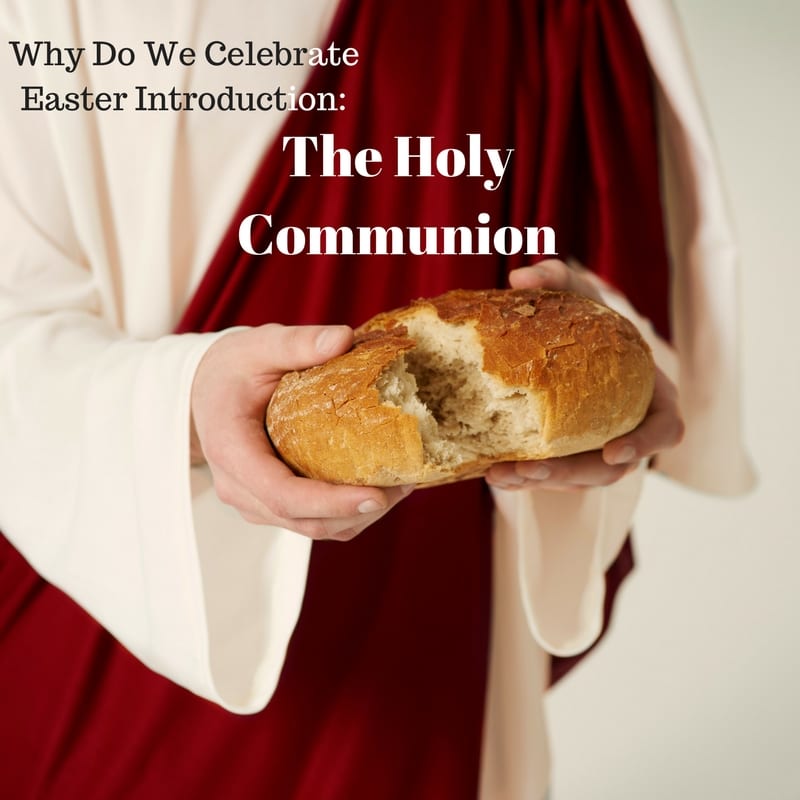We are a professional review company that receives compensation from companies whose products we review. We test each product thoroughly and give high marks only to the ones that are the very best. We are independently owned, and the opinions expressed here are our own.
In this blog post, we will introduce our series Why we celebrate Easter.
As Christians, this is our most holy and most revered of all holidays.
Today it is the day called Maundy Thursday which we celebrate to commemorate the night when Jesus Christ, Lord, and Saviour of the whole World instituted the Holy Communion.
In fact, this is one of the sacraments that is celebrated in all Christian churches. No matter if your church is Eastern Orthodox, Catholic, Lutheran, Anglican, Baptist, Calvinist, Pentecostal or some other denominations that you might belong to this is considered a sacrament.
Not Hocus Pocus: When A Jewish Passover-meal Turns Into A Christian Sacrament
The Gospels of (Saint) Matthew and (Saint) Mark both accounts for that after Jesus and the disciples had eaten a traditional Jewish Passover-meal, Jesus, takes a loaf of bread.
Now, this is nothing special if you ever attended a traditional Jewish Passover-meal (seder). Typically the father of the household takes a loaf of unleavened bread, breaks it into small pieces and shares it with his family. Then he does exactly the same with the wine.
Now Jesus does exactly this. He is the Master of the disciples and hence considered to be the oldest or at least the wisest among them. They constantly acknowledge this by calling him the Aramaic word Rabbi which means teacher, master or mentor.
The difference is that when Jesus does this he gives this traditional Seder a new meaning by saying “This is my body” (Matthew 26:26 and Mark 14:22) which in Latin is Hoc est corpus meum.
When people heard priests saying this in medieval Europe and tried to say it themselves they got it wrong and said Hocus Pocus. By doing so they hoped that they too could achieve the miracle of transubstantiation (see below for a further discussion about it) and turn something that might look and taste one way to something completely different.
Now we will turn the focus on how the churches view the Holy Communion themselves.
Different Views On The Sacrament Of The Holy Communion
In the (Roman-)Catholic Church, there is the teaching of transubstantiation. One of the greatest medieval thinkers, (Saint) Thomas Aquinas, explained it and it became a dogma at the Fourth Lateran Council in 1215.
Dogma is something that each Catholic had to believe to be true, otherwise, that person would be considered a heretic and banned, maybe even killed if the person believed otherwise.
The meaning of this dogma is that the bread truly becomes the bread of Christ and that the wine truly becomes the blood of Christ but has the taste and look of each of the elements intact.
No protestant Church believes in the transubstantiation, although some churches are very close while others are rejecting any divine presence at all.
The Calvinist Churches only thinks that the sacrament should be considered a symbolic act and that there is no divine presence at all.
This is actually not the teachings of John Calvin who believed that for the true believer it truly is the bread and blood of Christ that the person receives.
It was Zwingli who’s a belief has come to be the dominant teaching of the Calvinist Churches of today.
(Most) Lutheran Churches believes in the real presence which means that it is bread and wine as well as the body and blood of Jesus Christ simultaneously.
The words that are used to express this teaching is that the bread and wine “in, with and under” bread and wine. Catholics use these prepositions too but with the addition “through”.
Some movements have different views when it comes to this and the entire topic of the Holy Communion could be a lengthy article on this blog in the future.
Also, Pentecostal has different views but they are closer to the Calvinist churches as well as some Anglican Churches.
In the Orthodox Churches, the most common practice is to use leavened bread while in Catholic and Protestant Churches uses unleavened bread to resemble the Last Supper.
Other names
We would like to finish this post with other names of the Holy Communion.
The sacrament is also known as the Eucharist (from the Greek word eucharistia, which means thanksgiving), The Lord’s Supper (from the German word Abendmahl), the Holy Communion or simply Communion, the Sacrament of the Altar or the Sacrifice of the Mass.
During this Easter we will finish each blog post with a prayer in the form of a blessing:
Blessed are You, Lord our God,
who sent Your Son, Jesus Christ to this World,
so that every person that believes in him will gain eternal life through him.
Amen.
Next blog post
Our next blog post will be published on Good Friday (The 3rd of April 2015).
It will be about the Way of the Cross.
Until then,
The Chi Rho Dating Group




What do you think about the article you've just read? Please tell me below.